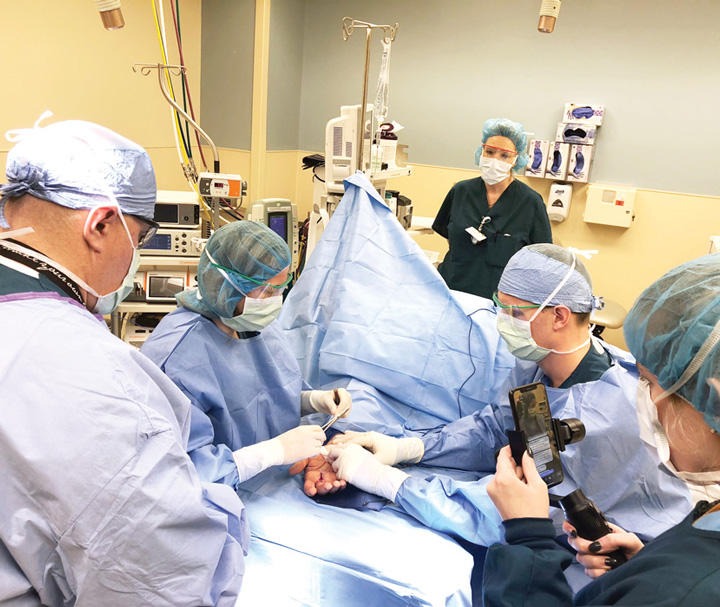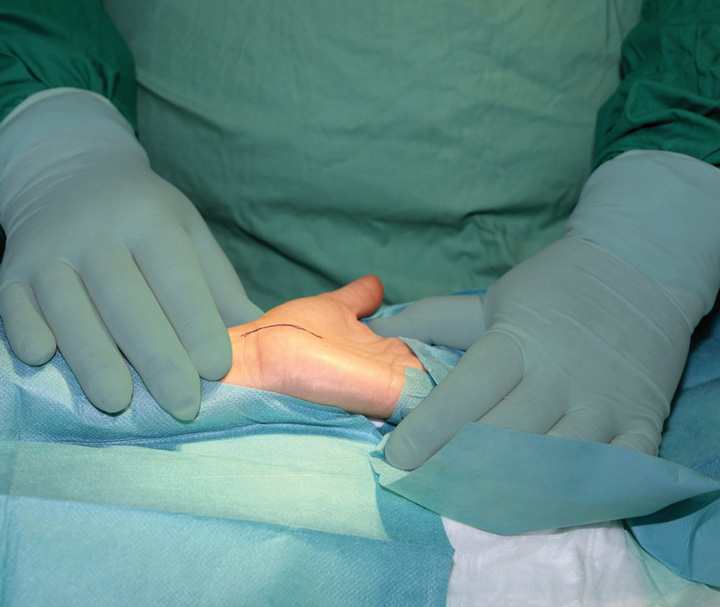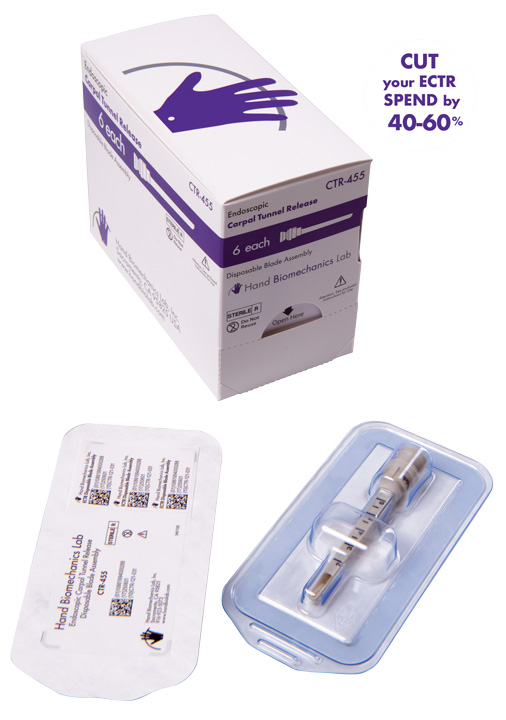Patients’ post-op perceptions suggest a need for better pre-op education.
 MISMATCHED EXPECTATIONS Surgeons and patients have different ideas about how long it takes to fully recover from successful carpal tunnel release surgery.
MISMATCHED EXPECTATIONS Surgeons and patients have different ideas about how long it takes to fully recover from successful carpal tunnel release surgery.
Surgeons often laud the speedy recoveries from carpal tunnel release (CTR) surgery, but some patients may beg to differ.
That’s one of the main takeaways from "Patient Perceived Time to Recovery After Carpal Tunnel Release," a prospective study that was presented at the poster exhibition at the 2024 American Academy of Orthopaedic Surgeons (AAOS) Annual Meeting in San Francisco.
The study surveyed 51 patients who underwent isolated CTR surgery preoperatively, and then at multiple timepoints postoperatively until they reported full recovery. Patients completed a 0-10 Likert scale for pain, the QuickDASH, the Boston Carpal Tunnel Questionnaire (BCTQ) Symptom Severity Scale (SSS) and Functional Status Scale (FSS). The patients were also asked if they felt fully recovered at four weeks, six weeks, three months, six months, nine months and 12 months.
The findings were eye-opening. Average time to self-reported full recovery was 5.5 months. What’s more, even at 12 months, six of 51 patients (11.8%) didn’t feel fully recovered.
In terms of outcome-based measurements, the mean Likert pain score, QuickDASH, BCTQ-SSS and BCTQ-FSS significantly improved from preoperative to full recovery, and the mean differences in these four measures exceeded minimal clinically important differences (MCID). Specifically, postoperative scores surpassed preoperative scores for the four metrics above by eight, 11, 14 and 15 weeks, respectively. Finally, the study found that higher preoperative scores on those metrics were all associated with failure to fully recover by 12 months postoperatively.
The authors point out that despite CTR surgery being one of the most common procedures in the U.S., there is limited research on patients’ perceptions of postoperative recovery.
Perhaps there should be. When a disparity exists between when a surgeon believes a patient is fully recovered and when the patient feels fully healed, there’s probably room for improved communication and patient education to set expectations.
As the study authors put it, "The time until patient-reported full recovery after surgery after isolated CTR is substantial and surprising. Patients and surgeons may assess different parameters when measuring recovery. Surgeons should be aware of this discrepancy when discussing expected recovery after surgery."
.svg?sfvrsn=be606e78_3)



.svg?sfvrsn=56b2f850_5)